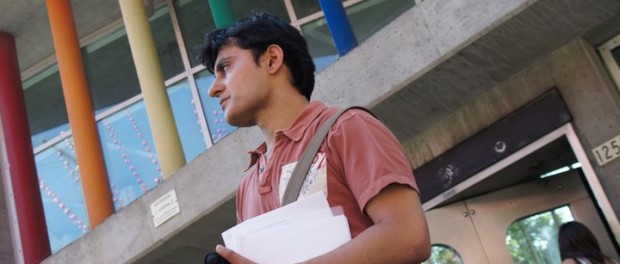Through my Brown Gay Lens – Am I a ‘Person of Color’?
I have come across discussions and critique of the use of ‘Person of Color’ as an identity in North America by racialized groups. Does the usurpation of this identity by people who are not black constitute a misrepresentation or even an erasure of the black identity? Or worse, does it leave the continued racialization of blacks in North America muddled in the discourse surrounding race, as mixed up with South Asian, Asian, Middle Eastern, Aboriginal — etc, etc — people? The question: How important is it to distinguish between racialized groups and navigate ‘distinction’ from ‘exclusion’?
I had never really thought of a shared identity as repressive to anyone within a racialized context. I always saw my identity as a ‘Person of Color’ to be a larger thought process that spoke to my solidarity with my kin and the (expanded) community. It was about a shared (not historically homogenous) repressive past and present that may have played out in different parts of the world, yet had the same common genesis. It was also about a commonality of activism that challenges the status quo. And, most importantly, to make the point that we never were and certainly aren’t a ‘minority’.
I have always wondered if in the discourse surrounding race there was a hierarchy outside of the obvious white space? I asked myself, if as a South-Asian I would be less or more subjected to racist politics and discrimination, as compared to others who are similarly vulnerable? And if so, what does that mean? Obviously, having lived in North America for close to a decade now, I am talking about this world here and by extension the global racism that peoples continue to be victims of. Racism is surely specific, based on the context it is placed in, however the underlying principles that drive it are just the same.
I want to say a hesitant yes and agree with the supposition that there is a tenuous and ever changing hierarchy at play within racialized communities, via-a-vis their treatment by white people. However, it is difficult for me to agree with the supposition wholeheartedly, as the main argument against ‘one label fits all’ does not apply necessarily when we are talking about racialized communities and their continued universal marginalization.
North America may have its unique characteristics in the way it was ‘formed’ during the period of colonization and while other parts of the world saw suppression without complete annihilation, North America (and South America to some extent) experienced a wiping out of communities and cultures. And what replaced it was the white colonizer and their non-white slaves. But this story played out everywhere, from India to South Africa, Argentina to the far reaches of New Caledonia. The process of suppression of peoples and cultures that went on for hundreds of years was all pervasive.
Move forward to the Twenty First century and the tentacles of this white supremacy continue to be in our face. From the levers of power to corporate control, international decision making to economic tools of global enslavement, there is little that escapes the white vs. the rest of the world dynamic. This of course is a simplistic portrayal of how racial power works, however the hegemony of white power hasn’t yet been broken, even though wealth and power has and continues to slip from their hands.
So as a South Asian born a generation after India become free from the yoke of colonialism, living in North America and being aware of the prejudice that is perpetrated against my people, the use of ‘People of Color’ as one of my identities is not to take away from another community. If the argument is that nuanced identity/identities exist within racialized groups, then for sure the argument is valid and can be made, however there is no appropriation or even a vague misnomer to the usage.
I do agree that within our communities we act as oppressed and oppressors at the same time. So privilege within certain communities simultaneously and for historical reasons has contributed to the targeting of black communities more than others, mass incarceration, continued and systematic perpetration of violence. However, these are symptoms of the problem and not the problem itself. Why are immigrant women from non-white communities least likely to join the workforce? Why are immigrant non-white groups the most underemployed and underpaid? Latinos and Hispanics remain the largest undocumented demographic in North America. Separating these experiences for clarity and perhaps recognition of individual realities may be important, but the complete exclusion of these experiences from a ‘People of color’ discourse is self-defeating.
While communities of color are powerful and they have the right to be identified separately, the coming together or allying of them as one vocal group, force, doesn’t debilitate them before a white supremacist social structure. Contrarily, it only makes the absurdity of the minority ruling the majority seem more and more abhorrent.





